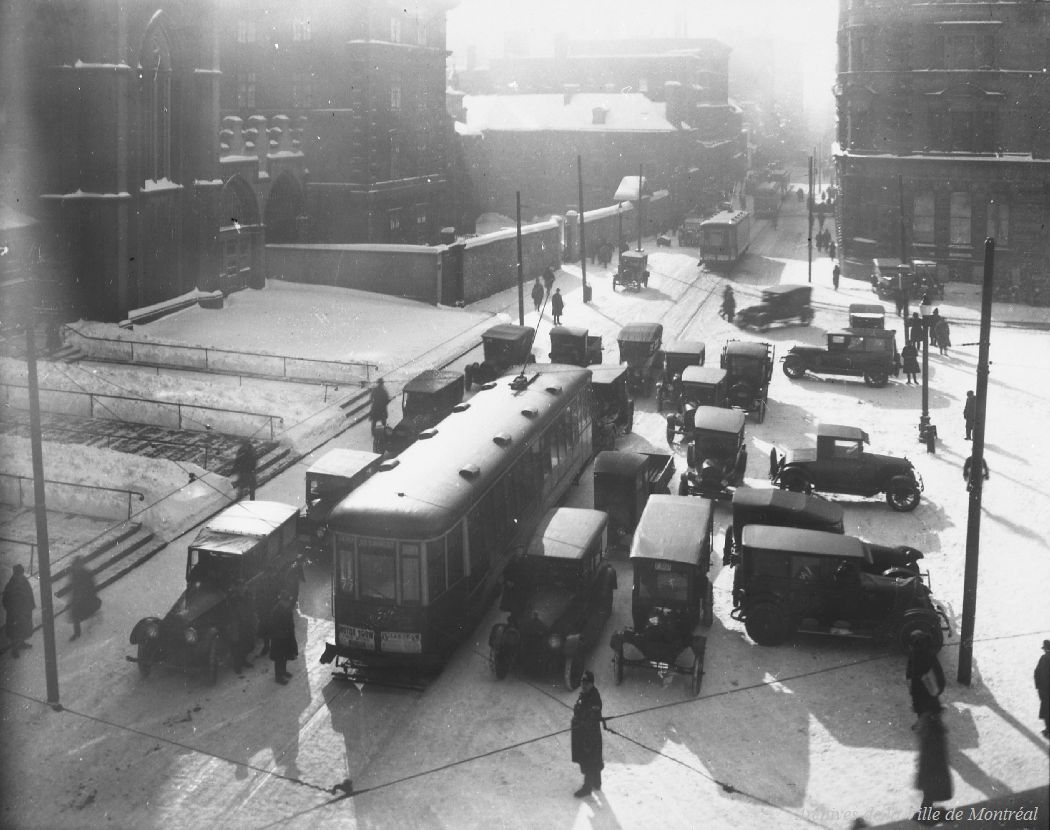Parc Jean-Drapeau is a large park located in the middle of the St. Lawrence River opposite the city of Montreal. Consisting of two islands — Saint Helen’s Island and Notre Dame Island — it covers approximately 2.68 square kilometres. It bears the name of the former mayor of Montreal, Jean Drapeau, and was the site of Expo 67. The park offers many activities, including the Canadian Grand Prix and a number of annual music festivals. It is home to the Casino de Montréal, Jean-Doré Beach and the Biosphère (an environmental museum). Throughout the year, the park hosts a wide variety of free activities open to the public and is a popular spot for cycling, water sports, hiking, and various outdoor activities. The park is accessible via a subway station which is also named in honour of Jean Drapeau.

History
Archeological evidence indicates the presence of St Lawrence Iroquoians in this area between the 1200s and the 1600s CE. In 1611, Samuel de Champlain named the island in honour of his wife, Hélène de Champlain. In 1820, the British established the fort on Île Sainte-Hélène. The island has been used by Montrealers for recreational purposes since the mid-1870s.
Known as Parc Jean-Drapeau since 1999, the park occupies almost all of Saint Helen’s Island and the entirety of Notre Dame Island. During the 1960s, Saint Helen’s Island was enlarged using (among other things) rocks and earth excavated during the building of the subway. Notre Dame Island — an artificial island — was also partially created in this manner. This work was performed to enable the islands to accommodate Expo 67, the “Universal and International Exhibition.”
Following the resounding success of Expo 67, the city of Montreal decided to continue using most of the pavilions for an annual exhibition known as the Terre des hommes (“Man and His World”) exhibition, which ran from 1968 to 1981.
A significant portion of Notre-Dame Island was completely rebuilt to accommodate rowing, canoeing and kayaking events during the 1976 Summer Olympics. In fact, the rowing basin is still in use. In 1978, the Notre Dame Island track was inaugurated to host the Canadian Grand Prix. In 1982, it was renamed the Circuit Gilles-Villeneuve.
In 1980, another section of old pavilions on Notre Dame Island was demolished and refurbished for the Floralies, an international horticultural exhibition. In 1985, the former French pavilion became the Palais de la civilisation, a spacious exhibition space which, in 1993, became the Casino de Montréal, the largest casino in Canada. The former American pavilion (which was damaged by fire in 1976) became the Biosphère environmental museum in 1995.
Attractions
In principle, La Ronde amusement park is not part of Parc Jean-Drapeau, despite the fact that it occupies the northern tip of Saint Helen’s Island. It is a major attraction for both Montrealers and tourists. In addition, since 1985, the Montréal Fireworks Festival has been held in La Ronde.
The Île Sainte-Hélène fort was open to the public as a museum until February 2021. The Hélène-de-Champlain pavilion, formerly a gourmet restaurant frequented by dignitaries visiting the city, remained closed throughout 2021. The Place des Nations, a major Expo 67 pavilion, is now being used as a warehouse. Currently closed to the public, it is scheduled for restoration in the near future. Other Expo 67 pavilions are still open: the American pavilion (Biosphère), the French and Quebec pavilions (Casino de Montréal), the Jamaican pavilion (primarily used for weddings and conferences), and the Canadian pavilion (used for park administration and as a conference centre). There are also a number of major artistic installations from Expo 67, including Alexander Calder’s L’Homme sculpture.
Annual events include the Osheaga, Heavy Montréal and ÎleSoniq music festivals, as well as the Canadian Grand Prix and the Fête des Neiges de Montréal. The park also includes the Montreal Aquatic Complex and Jean-Doré Beach.

 Share on Facebook
Share on Facebook Share on X
Share on X Share by Email
Share by Email Share on Google Classroom
Share on Google Classroom



